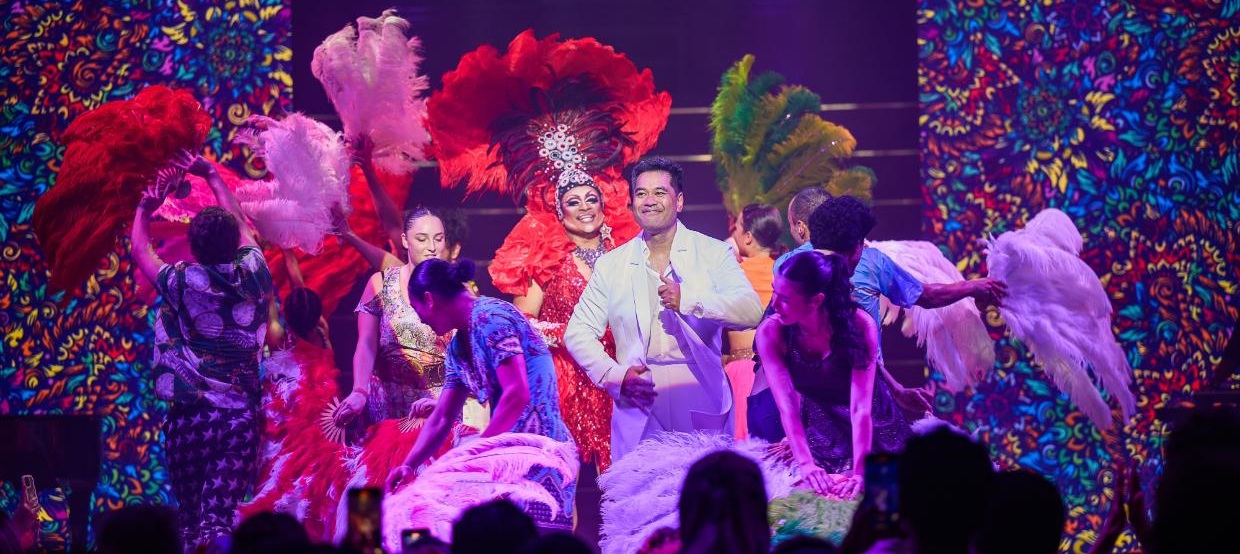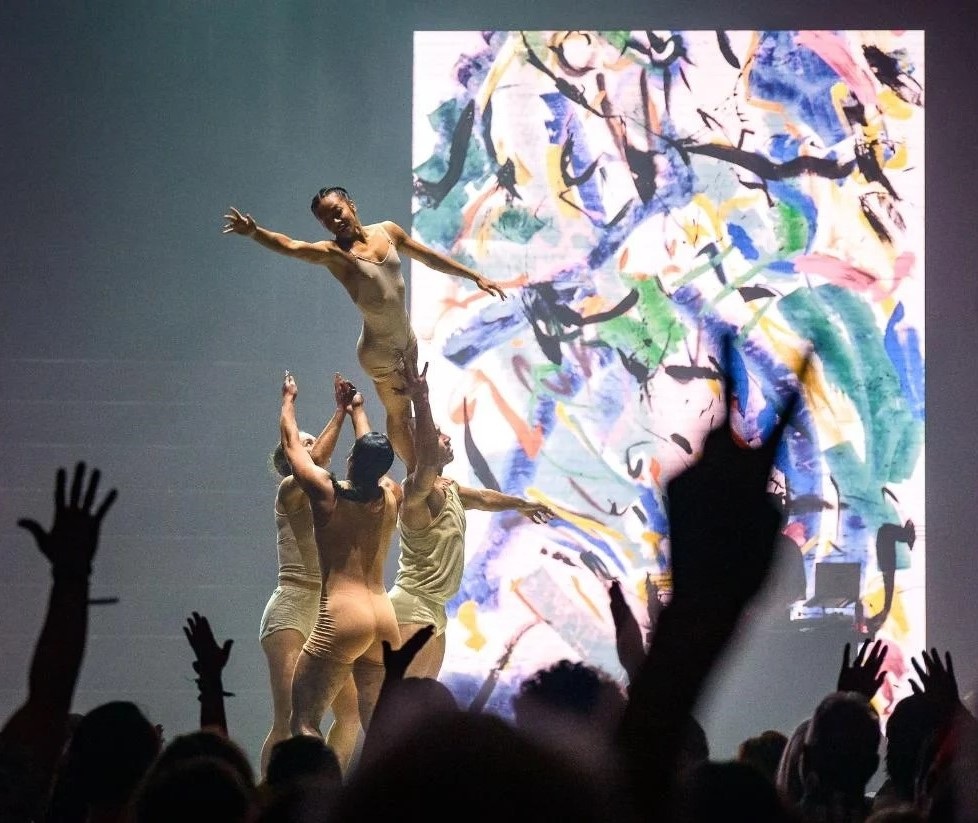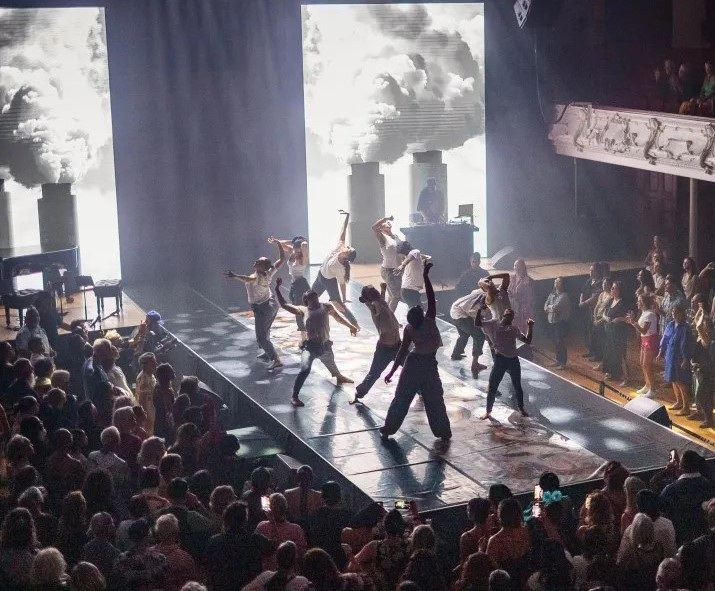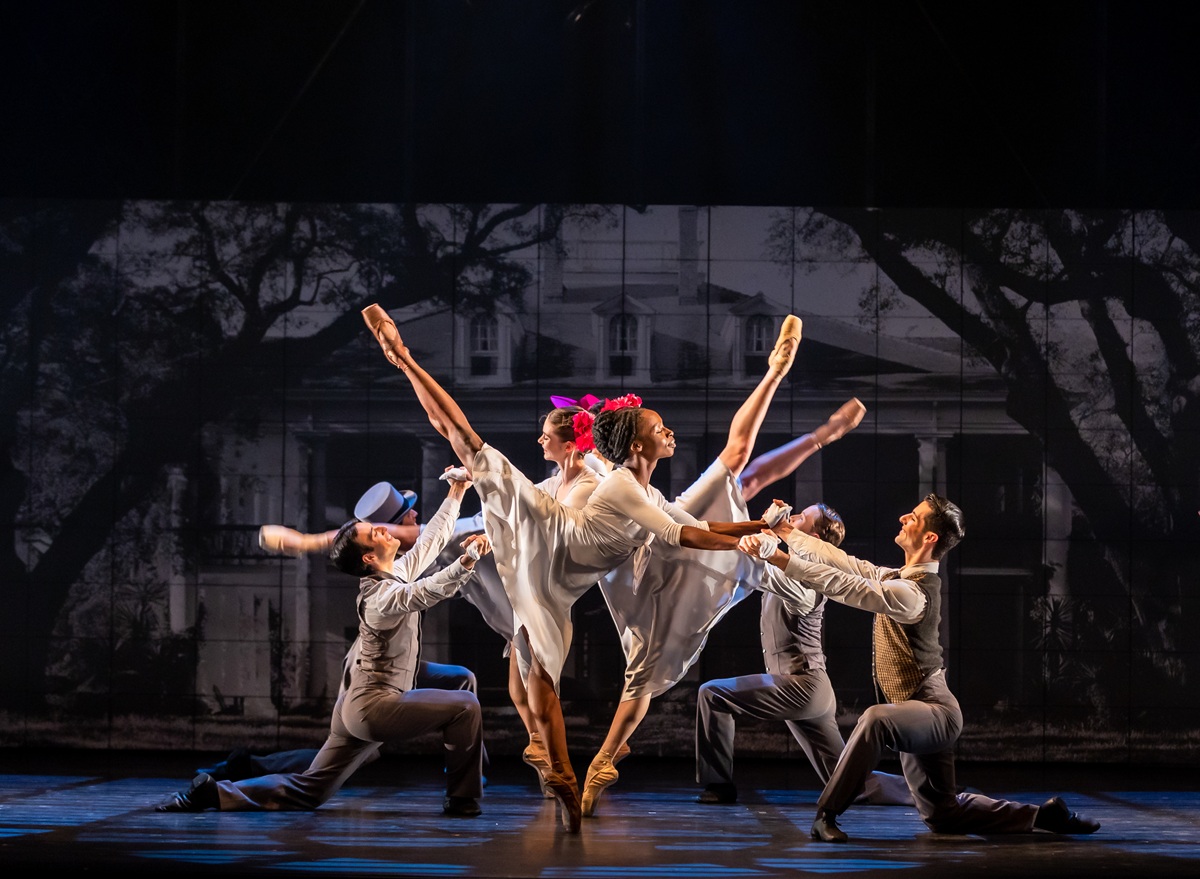This Is Not A Retrospective – Black Grace
Kiri Te Kanawa Theatre, Aotea Centre
20 March 2025
A Streetcar Named Desire – Scottish Ballet
Auckland Town Hall
22 March 2025
Reviewed by Brigitte Knight
Two of the headliner dance offerings featured in this year’s Auckland Arts Festival were A Streetcar Named Desire by the Scottish Ballet and This is Not a Retrospective by Black Grace, a one-night-only dance party and performance celebrating the company’s milestone achievement of 30 years onstage.
This Is Not A Retrospective – Black Grace
Director & Choreographer: Neil Ieremia ONZM
Sound Designer: Anonymouz

Unusually for a dance performance there is a long queue to a bag check before the general audience can enter the Auckland Town Hall for Black Grace’s This is Not a Retrospective (VIPs and patrons are ushered through without queueing and guided to preferential seating in the venue’s balcony). The event’s title and AAF website blurb forewarns us that we’re attending a celebratory dance party and spectacle rather than a dance performance, however, a warning about volume levels would have been helpful for those requiring earplugs for the concert-level sound once inside. Founding Artistic Director Neil Ieremia ONZM has enlisted the talents of a variety of kiwi artists to support his company of dancers, including hip hop singer/producer Che Fu, drag artist Buckwheat, hip hop artist Tha Feelstyle, the NZ Trio (Ashley Brown, Amalia Hall, Somi Kim), DJ Manuel Bundy, a choir (uncredited), and extra dancers cast from the freelance community (uncredited). Given the breadth and variety of guest performers and the strength and nuance of the Black Grace dancers, either a physical or digital programme for This is Not a Retrospective would’ve been a welcome addition to the experience. Production values throughout the night are slick, integrating high quality sound design by Anonymouz, two towering LED screens framing the stage (visual design uncredited), and a catwalk projecting the live performances into the Great Hall space. GA audience members can choose to stand concert-style around the catwalk for the show, or make use of limited seating at the back of the space, although the tech desk stands between the seating and the stage meaning sightlines are affected.

In its 30 years Auckland-based Black Grace has earned a loyal and appreciative following, and Ieremia does a brilliant job of creating hype, anticipation, and a party atmosphere as This is Not a Retrospective opens. The interplay of visual, audio, and movement design is consistently effective, entertaining, and powerful and vacillates between enhancing and dominating the action onstage. Still and moving retrospective imagery gives glimpses of Black Grace’s rich repertoire, but true to his intention, Ieremia keeps the focus securely on this night of celebration “for the fans and the families”. Ieremia’s direction and choreography is reflective of some of the frustrations aired in his recent fresh and forthright interview (NZ Herald, 22/03/2025); recorded voice says “to the haters” as the screens are filled with two enormous one-finger-salutes. For outsiders and audience members this thematic content may seem juxtaposed by the consistently positive reviews that Black Grace receives nationally and internationally, the strong funding they attract, an excited and generous audience, and sizeable attendance by fellow dance industry practitioners.

This is Not a Retrospective has plenty of joyful and celebratory moments, interspersed with 8s and 16s of brilliance when the Black Grace dancers reveal their true speed, attack, finesse, and power. Ieremia’s choreography is strongest when wielding his signature tools of expansive use of space, Siva Samoa, diagonals, unison and cannon, and ensemble lifts and flying, and although the catwalk stage prevents the full utilisation of these features, what is possible with the restrictions is fully explored. Buckwheat is characteristically charismatic and delightful, at times backed with simple ensemble choreography, Che Fu and Tha Feelstyle are deservedly warmly received, and the NZ Trio provide a vivacious and valuable point of difference. The GA audience are more subdued than expected, but unquestionably supportive and present – quite probably mesmerised by the spectacle of sights, sounds, costumes, scene changes, and energy emanating from the stage. By the finale most of the audience is bopping along, and the biggest round of applause (and confetti) is for Ieremia himself, emerging from amongst the cast centre stage in a pristine white suit.
Congratulations to Ieremia and Black Grace on their fantastic achievement on their 30-year anniversary – here’s to many more years appearing on stages around Aotearoa and beyond.
A Streetcar Named Desire – Scottish Ballet
Director: Nancy Meckler
Choreographer: Annabelle Lopez Ochoa
Music & Sound Designer: Peter Salem
Designer: Nicola Turner
Lighting Designer: Tim Mitchell
Conductor: Robert Baxter
With touring members of Scottish Ballet Orchestra and members of Auckland Philharmonia


Created in collaboration with director Nancy Meckler for the Scottish Ballet, choreographer Annabelle Lopez Ochoa’s A Streetcar Named Desire premiered in 2012 and has become a popular feature of the company’s repertoire ever since. Recreating Tennessee Williams’ infamous play necessitates stepping into a monumental theatrical history; since its Broadway debut in 1947 A Streetcar Named Desire’s casting reads like a who’s who of acting royalty (revivals have featured Gillian Anderson, Glenn Close, Paul Mescal, Cate Blanchett, John C. Reilly, Frances McDormand, Alec Baldwin and more). Since joining Scottish Ballet as Artistic Director in 2012 and CEO in 2015, Christopher Hampson CBE has supported the company in performing all over the world, and has brought in dance creators of significance including Crystal Pite, David Dawson, and Matthew Bourne. Hampson has a strong kiwi connection having choreographed a number of works for the Royal New Zealand Ballet, and the two companies collaborated on a mixed bill of four short works in Wellington the week before A Streetcar Named Desire opened in Auckland.
Scottish Ballet are a diverse company of dancers whose uniformity lies in their physical and artistic strength, clean, consistent technique, and mastery of expressive nuance. Carrying a substantial narrative such as Williams’ southern gothic A Streetcar Named Desire requires a company with maturity and stamina, and choreography/direction that is considered, detailed, and intentional. Lopez Ochoa and Meckler absolutely nail the brief with their modern ballet in two acts, drawing on flawless lighting and set design by Tim Mitchell and Nicola Turner and integrating both production technologies as foundational features of the choreography and movement vocabulary. Similarly, a score combining recorded music and live orchestration by touring members of Scottish Ballet Orchestra with Auckland Philharmonia gives the ballet a clear context in time and place, skillfully drawing on elements of various music genres and weaving them together to create an aural language for the world of A Streetcar Named Desire.


Photos: Andrew Ross
Choreographically Lopez Ochoa’s work is well-suited to the demands of a full length narrative ballet, and is flavoured by elements of Jerome Robbins (West Side Story) jazz, classical pas de deux and corps de ballet placement, neo classical alignment and use of levels, and - most striking and impactfully – contemporary ballet. The pas de deux closing Act 1 is a fine example of perfect choreographic balance; creative, technical, and emotionally captivating. Scottish Ballet’s principals Roseanna Leney as Blanche DuBois, Jessica Fyfe as her sister Stella Kowalski, Evan Loudon as Stanley Kowalski, and Bruno Miccihiardi as Mitch deliver rich, generous, enlivened performances underpinned by beautiful technique, impressive power, and sensitive partnering. As a staple of Scottish Ballet repertoire A Streetcar Named Desire is absolutely secure in the leads and ensemble alike, yet the company members have mastered bringing freshness of performance quality to each new audience.
A Streetcar Named Desire has accessible, emotional storytelling and characterisation, crystal clear narrative, and wide audience appeal. Delivered by dancers so consistently strong and with such impressive power and stamina, it is likely to have earned some new fans of the genres of contemporary and modern ballet.
“This Is Not A Retrospective”, Black Grace. Photo: Jinki Cambronero
“A Streetcar Named Desire”, Scottish Ballet. Photos: Andrew Ross
Gallery is loading. Please wait. Javascript will need to be enabled to view it.

